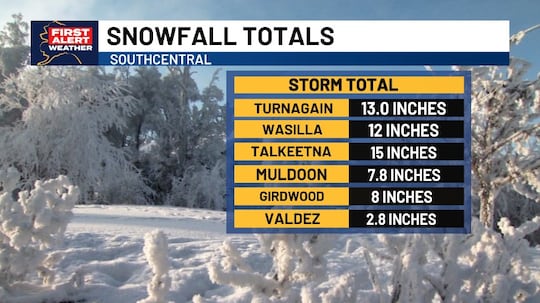Alaska
Kirk's Alaskan Cruise Blog 2024

PARKERSBURG, W.Va. (WTAP) – Kirk Greenfield and 24 guests from the Mid-Ohio Valley began their 12 days trip to Alaska on Friday, July 5th.
Starting with a 4 AM wake up, Kirk and hcompany assembled at the Baymont Inn in Marietta to board the motor coach, and begin their 3 hour trip to Pittsburgh International Airport. The trip went well with all arriving on time, and the flight left at 11 a.m. for a connection in Chicago.
Starting with a 4 AM wake up, Kirk and company gathered at The Baymont Inn to board a motor coach for the three hour ride to Pittsburgh airport. We ran on schedule and all went well, meeting our tour director Sherry.
A short hop to Chicago for a connecting flight gave some a chance for shut eye, and then a four hour flight to Seattle was next. This plane was also full. Eventually, the Rocky Mountains came into view, and we were thrilled to see snowcapped mountain ridges sail by. The largest mountain by far was Mount Rainier, which can be seen most anywhere from Seattle, including our hotel for the night.
Some chose to go right to bed, while others decided to find a bit to eat either in the hotel restaurant or across the street as a variety of smaller eateries, including Subway, the 13 coins Steakhouse, the Hawaiian Hibachi and more.
I have always said that the first day is the hardest, in part because of working the evening shift, and then having to turn around and drive to the pick-up point before dawn. The good news is that our Holiday Vacations Tour Director is very experienced and has it all under control. In addition to our 24 MOV travelers, there are six more coming from Chicago and a family of ten who will also be with us, for a total of 42 on this trip.
We are all excited to start our three day cruise with Holland America on the inland waterway tomorrow, Saturday and visit Canadian and Alaskan ports of call all the way up to Skagway. But more on that later. It’s time for some much needed shut-eye.
*(One small sad point: We were disappointed to discover that our favorite T-Rex skeleton “Sue” at the Pittsburgh airport is not visible while reconstruction work is going on. It’s a favorite landmark that we had been hoping to snap pictures of and shoot a video for the folks back home. Perhaps another day of upon or return.)
Copyright 2024 WTAP. All rights reserved.

Alaska
National Native helpline for domestic violence and sexual assault to open Alaska-specific service
Alaska
Dozens of vehicle accidents reported, Anchorage after-school activities canceled, as snowfall buries Southcentral Alaska

ANCHORAGE, Alaska (KTUU) – Up to a foot of snow has fallen in areas across Southcentral as of Tuesday, with more expected into Wednesday morning.
All sports and after-school activities — except high school basketball and hockey activities — were canceled Tuesday for the Anchorage School District. The decision was made to allow crews to clear school parking lots and manage traffic for snow removal, district officials said.
“These efforts are critical to ensuring schools can safely remain open [Wednesday],” ASD said in a statement.
The Anchorage Police Department’s accident count for the past two days shows there have been 55 car accidents since Monday, as of 9:45 a.m. Tuesday. In addition, there have been 86 vehicles in distress reported by the department.
The snowfall — which has brought up to 13 inches along areas of Turnagain Arm and 12 inches in Wasilla — is expected to continue Tuesday, according to latest forecast models. Numerous winter weather alerts are in effect, and inland areas of Southcentral could see winds up to 25 mph, with coastal areas potentially seeing winds over 45 mph.
Some areas of Southcentral could see more than 20 inches of snowfall by Wednesday, with the Anchorage and Eagle River Hillsides, as well as the foothills of the Talkeetna Mountain, among the areas seeing the most snowfall.
See a spelling or grammar error? Report it to web@ktuu.com
Copyright 2026 KTUU. All rights reserved.
Alaska
Yundt Served: Formal Charges Submitted to Alaska Republican Party, Asks for Party Sanction and Censure of Senator Rob Yundt

On January 3, 2026, Districts 27 and 28 of the Alaska Republican Party received formal charges against Senator Rob Yundt pursuant to Article VII of the Alaska Republican Party Rules.
According to the Alaska Republican Party Rules: “Any candidate or elected official may be sanctioned or censured for any of the following
reasons:
(a) Failure to follow the Party Platform.
(b) Engagement in any activities prohibited by or contrary to these rules or RNC Rules.
(c) Failure to carry out or perform the duties of their office.
(d) Engaging in prohibited discrimination.
(e) Forming a majority caucus in which non-Republicans are at least 1/3 or more of the
coalition.
(f) Engaging in other activities that may be reasonably assessed as bringing dishonor to
the ARP, such as commission of a serious crime.”
Party Rules require the signatures of at least 3 registered Republican constituents for official charges to be filed. The formal charges were signed by registered Republican voters and District N constitutions Jerad McClure, Thomas W. Oels, Janice M. Norman, and Manda Gershon.
Yundt is charged with “failure to adhere and uphold the Alaska Republican Party Platform” and “engaging in conduct contrary to the principles and priorities of the Alaska Republican Party Rules.” The constituents request: “Senator Rob Yundt be provided proper notice of the charges and a full and fair opportunity to respond; and that, upon a finding by the required two-thirds (2/3) vote of the District Committees that the charges are valid, the Committees impose the maximum sanctions authorized under Article VII.”
If the Party finds Yundt guilty of the charges, Yundt may be disciplined with formal censure by the Alaska Republican Party, declaration of ineligibility for Party endorsement, withdrawal of political support, prohibition from participating in certain Party activities, and official and public declaration that Yundt’s conduct and voting record contradict the Party’s values and priorities.
Reasons for the charges are based on Yundt’s active support of House Bill 57, Senate Bill 113, and Senate Bill 92. Constituents who filed the charges argue that HB 57 opposes the Alaska Republican Party Platform by “expanding government surveillance and dramatically increasing education spending;” that SB 113 opposes the Party’s Platform by “impos[ing] new tax burdens on Alaskan consumers and small businesses;” and that SB 92 opposes the Party by “proposing a targeted 9.2% tax on major private-sector energy producer supplying natural gas to Southcentral Alaska.” Although the filed charges state that SB 92 proposes a 9.2% tax, the bill actually proposes a 9.4% tax on income from oil and gas production and transportation.
Many Alaskan conservatives have expressed frustration with Senator Yundt’s legislative decisions. Some, like Marcy Sowers, consider Yundt more like “a tax-loving social justice warrior” than a conservative.
Related
-

 News1 week ago
News1 week agoFor those who help the poor, 2025 goes down as a year of chaos
-

 Detroit, MI4 days ago
Detroit, MI4 days ago2 hospitalized after shooting on Lodge Freeway in Detroit
-

 Dallas, TX3 days ago
Dallas, TX3 days agoDefensive coordinator candidates who could improve Cowboys’ brutal secondary in 2026
-

 Detroit, MI1 week ago
Detroit, MI1 week agoWith 46k outages around Michigan, Metro Detroit prepares for power loss
-

 Southeast1 week ago
Southeast1 week agoMurder in small-town America: The crimes that tore quiet communities apart in 2025
-

 Miami, FL1 week ago
Miami, FL1 week agoMiami-Dade sheriff’s deputy opens fire on vehicle after altercation during traffic stop, officials say
-

 Technology2 days ago
Technology2 days agoPower bank feature creep is out of control
-

 Midwest1 week ago
Midwest1 week agoMcDonald’s locks doors to keep out individuals who present ‘a risk’ in crime-ridden Minneapolis area


























